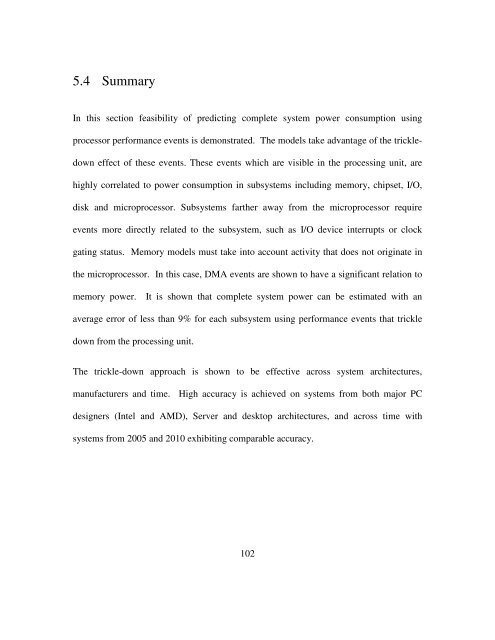Copyright by William Lloyd Bircher 2010 - The Laboratory for ...
Copyright by William Lloyd Bircher 2010 - The Laboratory for ...
Copyright by William Lloyd Bircher 2010 - The Laboratory for ...
You also want an ePaper? Increase the reach of your titles
YUMPU automatically turns print PDFs into web optimized ePapers that Google loves.
5.4 Summary<br />
In this section feasibility of predicting complete system power consumption using<br />
processor per<strong>for</strong>mance events is demonstrated. <strong>The</strong> models take advantage of the trickle-<br />
down effect of these events. <strong>The</strong>se events which are visible in the processing unit, are<br />
highly correlated to power consumption in subsystems including memory, chipset, I/O,<br />
disk and microprocessor. Subsystems farther away from the microprocessor require<br />
events more directly related to the subsystem, such as I/O device interrupts or clock<br />
gating status. Memory models must take into account activity that does not originate in<br />
the microprocessor. In this case, DMA events are shown to have a significant relation to<br />
memory power. It is shown that complete system power can be estimated with an<br />
average error of less than 9% <strong>for</strong> each subsystem using per<strong>for</strong>mance events that trickle<br />
down from the processing unit.<br />
<strong>The</strong> trickle-down approach is shown to be effective across system architectures,<br />
manufacturers and time. High accuracy is achieved on systems from both major PC<br />
designers (Intel and AMD), Server and desktop architectures, and across time with<br />
systems from 2005 and <strong>2010</strong> exhibiting comparable accuracy.<br />
102




